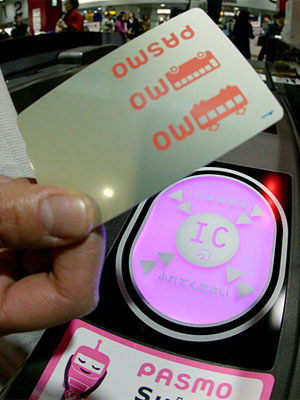The field of architecture takes Japanese-work-culture-masochism to the next level. The office opens before 9am and often closes well after 10pm, 6 days a week.
Studio in Cambridge may feel all-encompassing, but interning in Japan is physically and mentally demanding in an entirely different way.
Combined with little or no pay, serious language barriers, and heavy culture shock, this intense working lifestyle may not appeal to every student looking for a co-op job.
However, as is often the case, where the struggle is great, so too is the reward.
Working in Japan has been a transformative experience, and I hope that this guide will make such an experience more attainable for other students at the University of Waterloo School of Architecture.

Super moody photo in front of Mt. Fuji.
Preparation for Japan
Depending on how long you plan to work in Japan, you may or may not need a visa.
As your internship will most likely be unpaid, you can enter Japan and work for 3 months without a visa. Although it is technically illegal to do so, many people have left the country and returned via a different port of entry so as to extend their stay for another 3 months. I have not tried this, so I cannot speak from experience.
If you choose to go the legal route and work for 3 months before flying out, you will not have many opportunities to travel within Japan. Therefore, you should talk with your employer before coming to Japan in order to arrange one or more blocks of travel time. It may be wise to schedule your travel according to some of the national holidays in order to miss as little work as possible. Your firm will hopefully grant you leave, as you are a foreigner attempting to understand Japanese culture through immersion.
If you are planning to work for over 3 months, you have two options for visas. You can either have your employer assist you in the complicated visa application process (which will be especially difficult if there is a language barrier), or you can apply for a Working Holiday Visa. I went with the second option, and therefore cannot speak about the first. (Note: If anyone has gone through the standard visa application process, please contact me so we can update this article with the relevant information.)
The Working Holiday Visa is one big, strange, wonderful loophole. It is valid for 6 months, with the option to extend for 6 more months. A person can only receive this visa once in their life. It is marketed to travellers who want to work sporadically across the country to pay for their trip. Officially, an applicant can prearrange a paying job before applying for the visa. However, anyone who has actually prearranged a job will most likely be denied the visa.
Although this sounds confusing, it’s actually quite an easy process to navigate, especially if you get assistance from the Travel Cuts SWAP program. For around $350, they will guide you through the entire Working Holiday Visa application process, represent you at the Japanese consulate, and essentially guarantee you the visa.
In your application, it is crucial that you do not mention your job. Instead, you will need to create a false travel plan showing generally where you will go and what you will see. No one will ever hold you accountable to this itinerary, but make sure it looks believable. Read a few Wikipedia and Wikitravel pages for ideas. You can write whatever you like, but again, don’t talk about your job.
If you are using the SWAP program, you should have your visa in five or six weeks. The application requires that you have a flight in and out of Japan, so give yourself lots of time between when you expect to receive the visa and when your flight actually leaves Canada, just in case something comes up.
Once you get to the city where your firm is located and find a place to live, you will need to register at your local ward office. At this point, no one will question you or ask to see that travel itinerary you made way back when.
—
In retrospect, the visa application process was easy. Learning Japanese is certainly more difficult.
I won’t go into much detail, but the best way to learn on your own is by trying out many different methods.
I tried using Rosetta Stone, reading the book ‘Remembering the Kanji Vol. 1‘, watching anime (Akira, all of the Studio Ghibli films, etc.), and using Anki for flash cards.

There are many options available for learning on your own, and you can also sign up for language exchange programs online (such as this one). These will allow you to engage in conversation with native speakers through emails, Skype calls, or meetings in real life.
While in Japan
Renting a house is a difficult and expensive process in Japan, even for the Japanese. Share Houses have emerged to address this problem. They are probably your best option, as they usually have a good mix of natives and foreigners living in them and they come furnished.
—
Your transit options will vary depending on which city you are located in and how far away from work you live. A new bike can be had for under $100, and it comes with some form of insurance. I never understood the paperwork, so I don’t know exactly what I signed. You should probably bring someone who speaks Japanese with you.

Whether or not you buy a bike, you will probably be riding public transit. In most major cities, you can buy a rechargeable IC Card that streamlines the process of getting on and off busses and subways. These cards go by different names in different areas, but as of March 2013, most of the cards are usable anywhere. These cards are becoming increasingly accepted as methods of payment at major stores throughout Japan, so it may be wise to purchase one.
If you do not want to buy a card, remember to always keep your transit ticket on hand. In Japan, you technically pay for your trip when you arrive at your destination. Fares change depending on distance, and so you must put your transit ticket through the turnstile as you exit.
Your trip will be confusing. Google maps is decent, but use Hyperdia for more thorough directions.
—
If you have made time to travel, you might want to consider catching a ride through the Japanese version of RideShare, sleeping at a local’s house using CouchSurfing, or flying cheaply using Jetstar.
—
There are a few options for phones in Japan. If you only want something to text people within Japan, you can get a cheap phone from SoftBank.
If you are bringing your own phone, you may want to purchase a SIM card for calling, texting, and using data. The best option that I have found is a company called B-Mobile, which may or may not be a subsidy of telecom giant NTT. It is relatively unknown amongst the Japanese, but it is the cheapest option, especially for foreigners.
With b-mobile, you have two options, and your phone must be unlocked for both. You can either go with the SIM cards marketed to foreigners, or you can go with the SIM cards marketed to the Japanese. Thanks to the translation efforts of one of my coworkers, I went with the latter.
I am using an iPhone 4, purchased from AT&T in 2011 and unlocked in 2013. I bought a b-mobile 3G-4G 1GB card every month for around $30. They are sometimes difficult to find, but any large camera and electronics store near the main train station in your city should have them.
Once your phone is set up, you will want to download the Line app, which is WhatsApp except that it’s for Japanese people and everyone actually uses it. You will also want to figure out how to receive earthquake warnings on your phone, as the warning systems can change depending on the phone and service provider you use.
Conclusion
This guide only exists to facilitate entry into Japan. Nothing will prepare you for your experience here. Best of luck, and feel free to contact me with any questions, comments, criticisms, or changes to this post.
乾杯

Left: Aerial of Japanese “countryside”. Right: Cherry Blossom Viewing




1 Comment
Leave your reply.